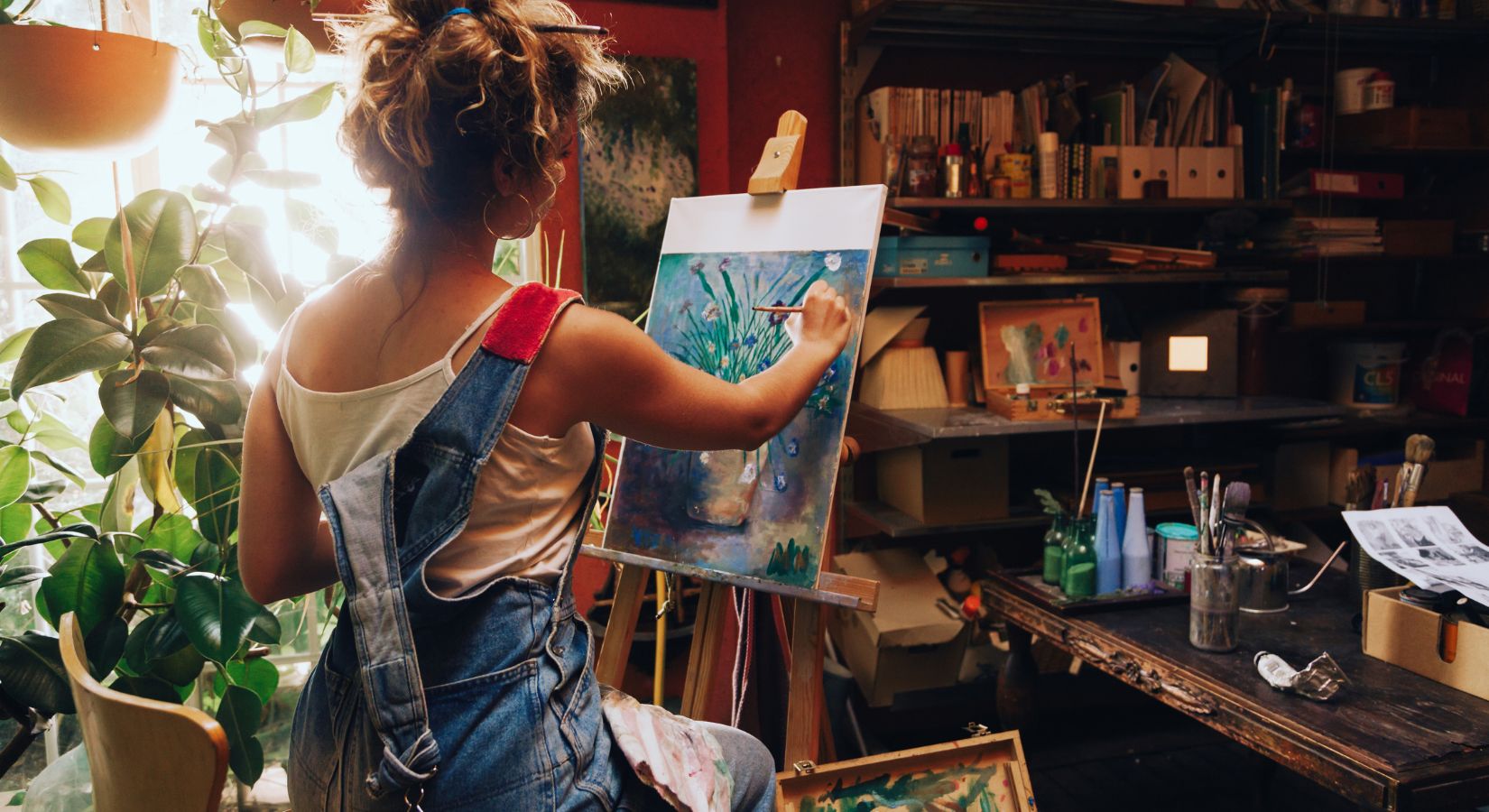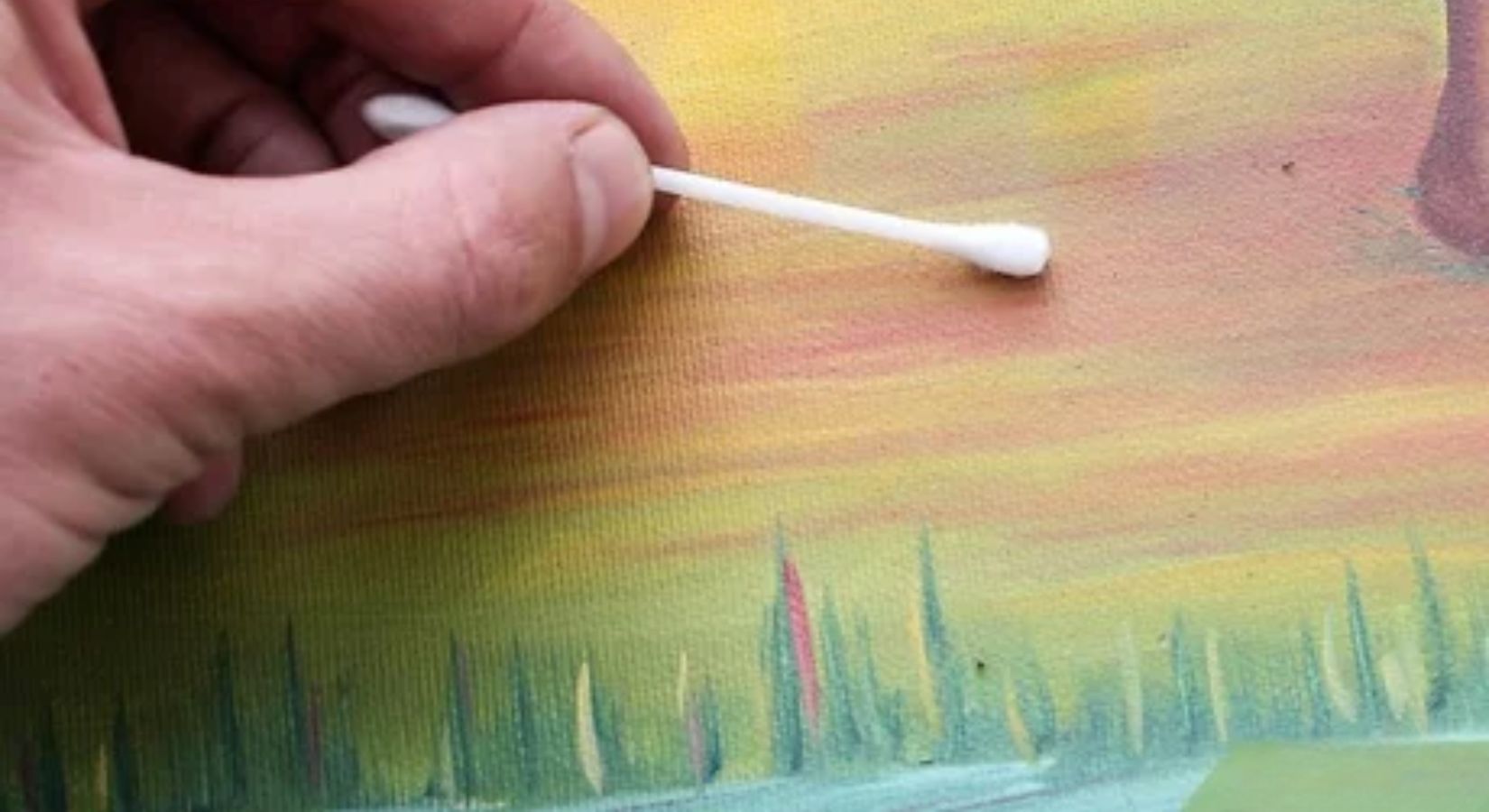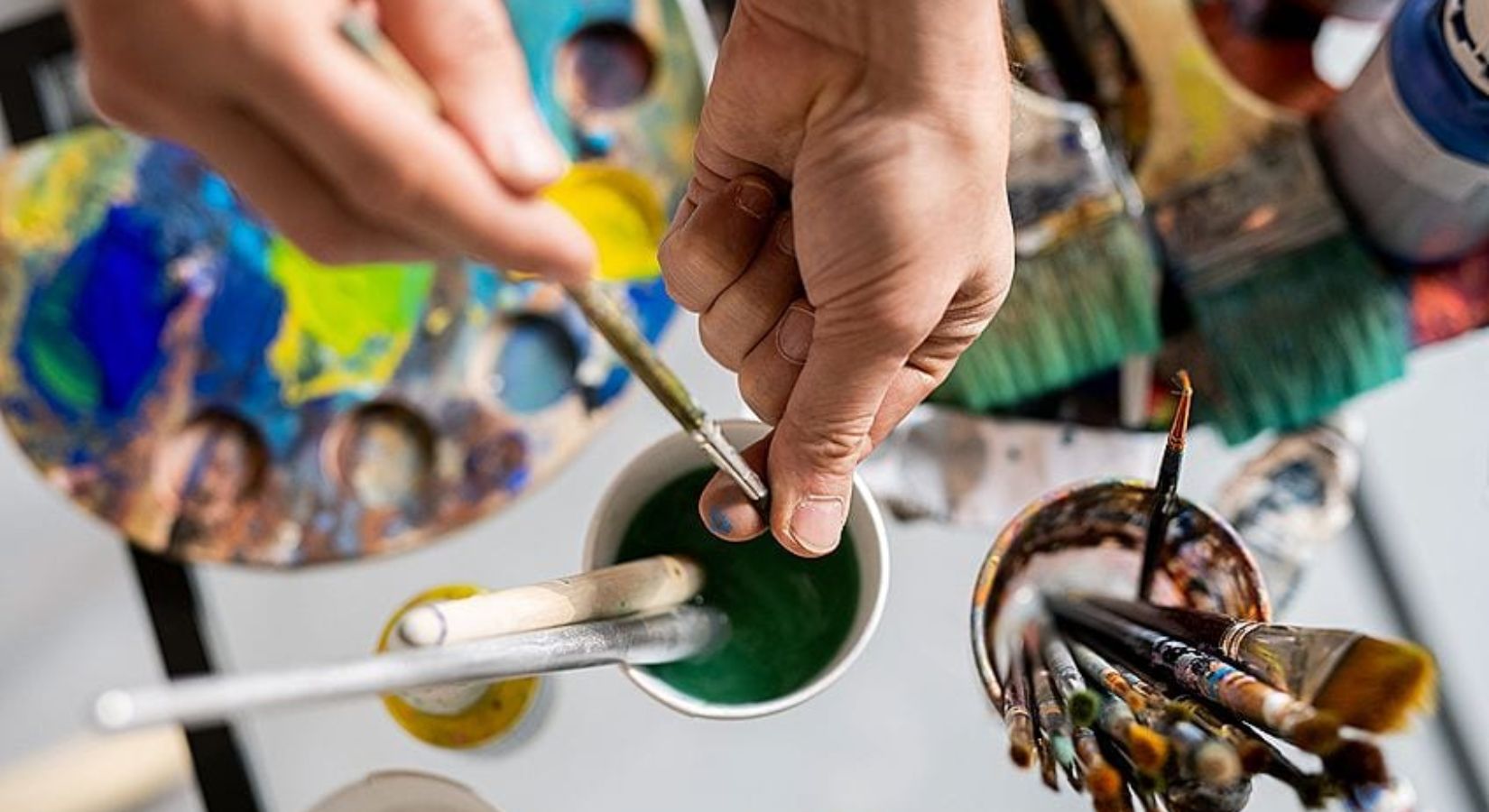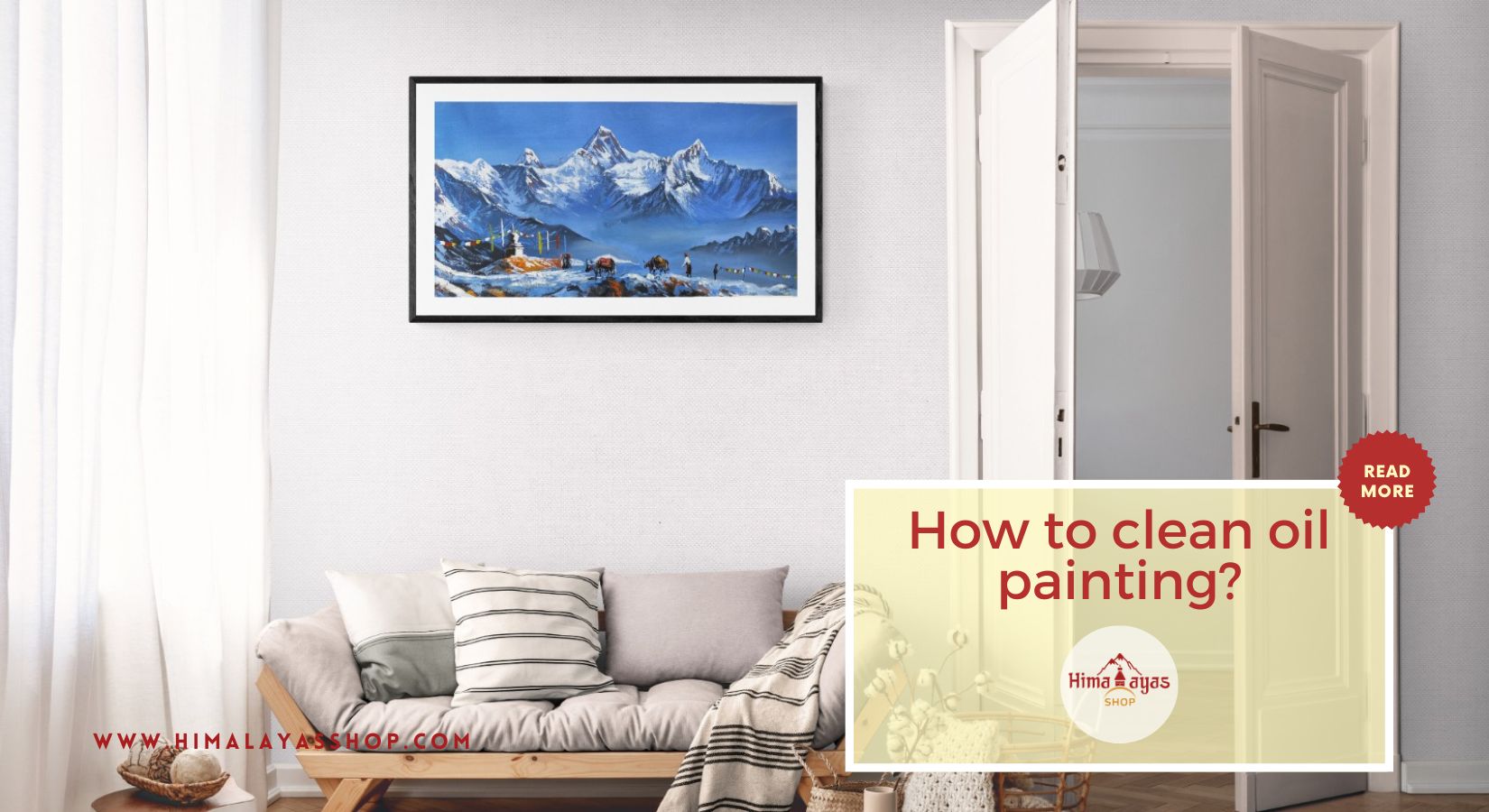Oil paintings are timeless pieces of art that require delicate care to maintain their beauty and integrity, whether they depict serene landscapes of the Himalayas or intricate artwork from Nepal. Over time, dust, dirt, and grime can accumulate on the surface, dulling the colors and obscuring the details of your cherished Himalayan oil painting. Cleaning oil paintings may seem daunting, but with the right techniques and tools, you can restore them to their original glory while preserving their value and aesthetics.
Understanding Oil Paintings

Before diving into the cleaning process, it's essential to understand the structure of oil paintings, including those inspired by the breathtaking landscapes of Nepal or the majestic Himalayas. Oil paint consists of pigment particles suspended in a drying oil, such as linseed oil, applied in layers onto a canvas or wood panel, creating depth and texture. Over time, the surface of these artworks may become dirty or discolored due to environmental factors, improper storage, or neglect.
Assessing the Condition
Before cleaning an oil painting, carefully examine its condition, whether it's an artwork from Nepal or a Himalayan landscape painting. Look for signs of dirt, grime, yellowing varnish, or flaking paint. It's crucial to proceed with caution, especially if the painting is old or fragile, as with many artworks originating from Nepal or depicting scenes of the Himalayas. If you're unsure about the painting's condition or authenticity, consider consulting a professional conservator before attempting any cleaning procedures.
Gathering the Right Tools

Cleaning oil paintings, including those depicting the breathtaking landscapes of Nepal or the serene beauty of the Himalayas, requires the proper tools to avoid damaging the delicate surface. Here are some essential items you'll need:
Soft-bristled brushes: Use brushes with natural hair or soft synthetic bristles to gently remove surface dust and dirt from your Himalayan oil painting or artwork from Nepal.
Mild detergent: Choose a gentle, pH-neutral detergent diluted with water for cleaning stubborn stains or grime without harming the delicate paint layers of your artwork from Nepal or Himalayan landscape painting.
Microfiber cloths: Use lint-free microfiber cloths to wipe the surface of the painting without leaving behind lint or fibers, ensuring the pristine beauty of your Himalayan oil painting or artwork from Nepal.
Distilled water: Distilled water is free from impurities and is safe to use for cleaning delicate surfaces like those found in artwork from Nepal or Himalayan landscape paintings.
Cotton swabs: Use cotton swabs sparingly for detailed cleaning in small areas, but be cautious to avoid rubbing too hard, particularly on delicate artworks such as those from Nepal or Himalayan scenes.
Step-by-Step Cleaning Process

Now that you've gathered your tools, let's walk through the step-by-step process of cleaning an oil painting, whether it's a Himalayan landscape or an artwork from Nepal:
Dust Removal: Start by gently brushing the surface of the painting with a soft-bristled brush or a clean, dry microfiber cloth, working from the top downwards to remove loose dust and dirt, preserving the intricate details of your Himalayan oil painting or artwork from Nepal.
Spot Cleaning: If you notice stubborn stains or grime on your artwork from Nepal or Himalayan landscape painting, dampen a microfiber cloth with a small amount of diluted detergent. Test the solution on a small, inconspicuous area of the painting to ensure compatibility with the paint and varnish, gently dabbing the stained area to avoid damaging the delicate surface.
Varnish Removal (Optional): If the painting has a yellowed or discolored varnish, you may consider removing it to reveal the true colors beneath. Varnish removal is a delicate process best left to professional conservators, as it requires expertise and specialized solvents to avoid damaging the paint layers, particularly in artworks from Nepal or Himalayan scenes.
Rinse with Distilled Water: After spot cleaning, use a clean microfiber cloth dampened with distilled water to rinse the surface of the painting, ensuring the purity and preservation of your artwork from Nepal or Himalayan oil painting. Avoid oversaturating the cloth and ensure it's wrung out thoroughly to prevent excess moisture from seeping into the canvas or wood panel.
Dry Thoroughly: Allow the painting to air dry naturally in a well-ventilated area, away from direct sunlight or heat sources, preserving the pristine beauty of your Himalayan oil painting or artwork from Nepal. Patience is key during the drying process, as rushing can lead to uneven drying or water damage.
Conclusion
Cleaning oil paintings, whether they depict the stunning landscapes of the Himalayas or intricate artwork from Nepal, requires patience, attention to detail, and the right tools and techniques. By following the steps outlined in this guide, you can effectively remove dirt and grime from your paintings while preserving their beauty and integrity for years to come. Remember to proceed with caution, especially with valuable or fragile artworks, and consider seeking professional advice if you're unsure about the cleaning process. With proper care and maintenance, your oil paintings will continue to be cherished treasures for generations to come.
We hope this guide has been informative and helpful in mastering the art of cleaning oil paintings, including those inspired by the majestic Himalayas or the rich culture of Nepal. Happy cleaning!




Leave a comment